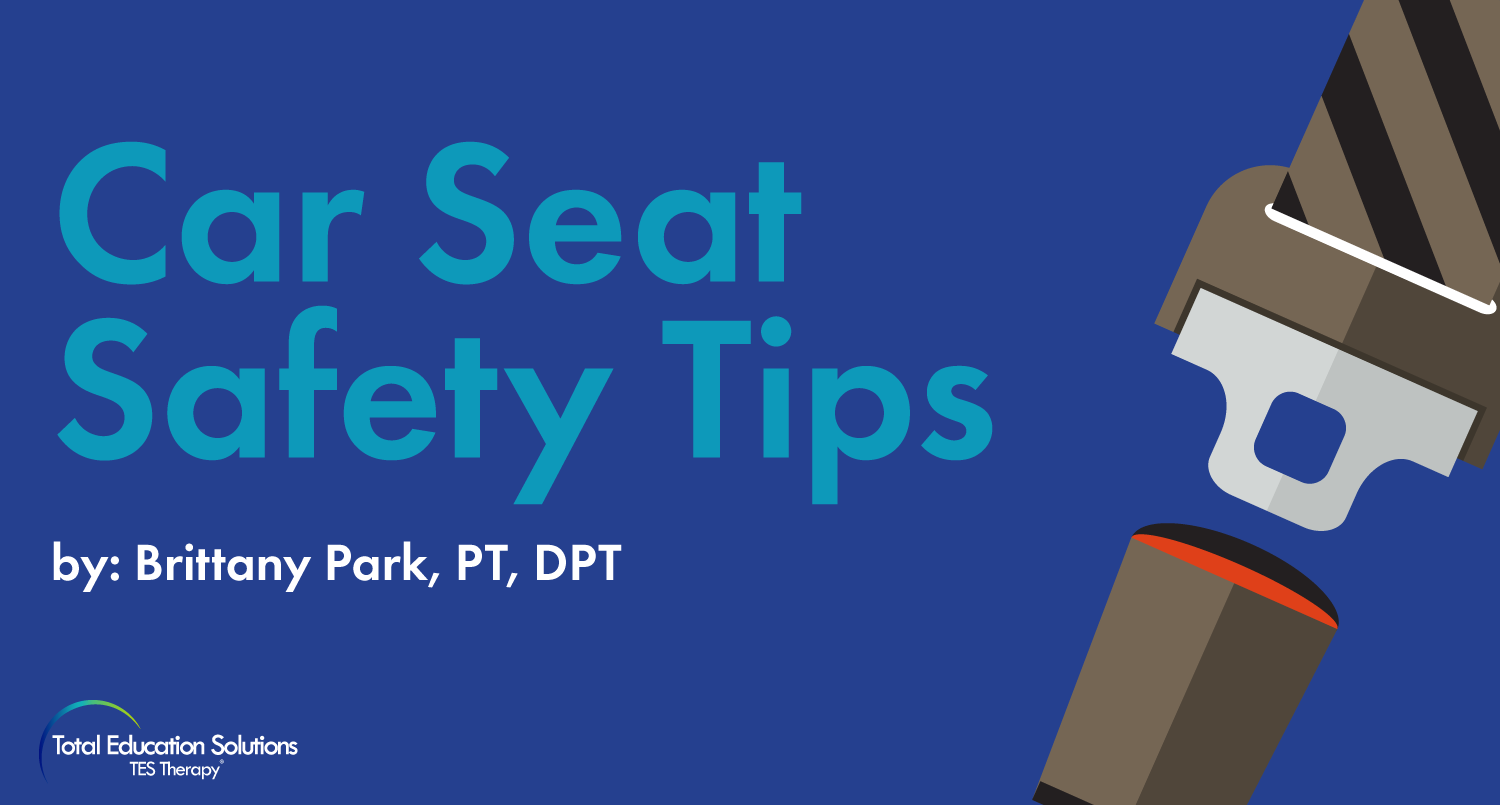Though using a car seat is required in all 50 states, car crashes are still a leading cause of preventable death for children ages 1 to 13. To avoid injury, it is extremely important to choose and use the right car seat for your child every time they get in the car. This research was sourced by evidence-based resources (see below) and complied by a licensed pediatric physical therapist. If you have questions or concerns, please discuss this topic with your child’s pediatrician.
Car Seat Types and Recommendations
There are a variety of different types of car seats on the market today, though it is not one-size-fits-all. Making sure you use a car seat that fits your child’s current size and age, not to mention your car, is important to ensure their safety. Here are the typical car seat types used for various age ranges:
● Rear-facing Car Seat
This car seat is the best to use right after your child is born until at least two years of age. The American Academy of Pediatrics recommends having children ride rear-facing until they reach the maximum height or weight allowed by the car seat manufacturer, which is typically past their second birthday. This car seat has a harness and, in a crash, helps to reduce the stress to the child’s fragile neck and spinal cord. As the child’s legs get longer, it is both safe and comfortable for a child in a rear-facing car seat to sit frog-legged or cross-legged.
● Forward-facing Car Seat
Once your child outgrows their rear-facing car seat, they should be switched to a forward-facing car seat with a harness until they outgrow the height or weight, which is typically between ages 5 and 7. This car seat has a harness and tether that limits your child’s forward movement during a crash.
● Booster Seat
Once your child outgrows their forward-facing car seat, between the ages of 5 and 7, a booster seat should be utilized. This seat helps position the seat belt so that it fits properly over the stronger parts of your child’s body.
● Seat Belt
Your child may ride safely without a booster seat when you can say YES my child can do ALL 5 of the following:
– Sit with back against the vehicle seat
– Knees bend at the edge of the seat
– Lap belt is on top of the thighs, not on the belly
– Shoulder belt between the neck and shoulder
– Sits properly (no slouching, no playing with seat belt, etc.)
It is important to note that an adapted car seat may be a better fit for children with additional behavior or physical needs. See more here: https://www.buckleupforlife.org/car-seat-101/special-needs/
Car Seat Installation Tips
Once you have chosen the appropriate car seat for your child, the next step is installing it in your car. Here are tips from the National Highway Traffic Safety Administration (NHTSA) to make sure you are installing the car seat correctly:
- Read the car seat’s instruction manual and the portion of your vehicle’s owner manual on car seat installation. Every car seat needs to be installed using either the lower anchors OR the seat belt to secure it in place.
- Place the car seat in the back seat of your vehicle and follow the manufacturer’s installation directions.
- If it is a rear-facing seat, make sure the car seat is installed at the correct recline angle. Most car seats have built-in angle indicators or adjustors that help with this step.
- If it is a forward-facing seat and has a tether strap, connect it to the tether anchor and tighten. This step is very important as it limits forward head movement in a crash.
Once the car seat is installed, it is time to fasten your child in it! In a rear-facing seat, the harness straps should be placed through the slot that is at or below your child’s shoulders. In a forward-facing seat, the harness straps should be placed through the slot that is at or above your child’s shoulders. Buckle the harness, then buckle the chest clip at armpit level, and tighten with the straps lying flat. You will know that the harness is tight enough when extra material cannot be pinched at the shoulder.
If you have questions about car seat installation, trained Child Passenger Safety Technicians can help you. Many local fire and police stations offer free car seat inspections, as well. For more information visit these websites:
https://www.nhtsa.gov/equipment/car-seats-and-booster-seats#installation-help-inspection
https://www.safekids.org/events/field_type/check-event
You may also register your car seat with the manufacturer or NHTSA to receive recalls and safety notices so your child can remain safe.
Extra Tips
● Car seats expire! Different car seats have different expiration dates, although they typically last 6 to 8 years.
● You should never buy a used car seat online. If you’re going to share with friends or use it for more than one child, infant seats that are in good condition are better for sharing than convertible car seats or boosters, which are used for longer and experience more wear and tear.
● If you’ve been in an accident, there’s a good chance that your car seat needs replacing. Most manufacturers say that the car seat requires replacement no matter how bad the crash is.
References
Car Seats and Booster Seats. NHTSA. https://www.nhtsa.gov/equipment/car-seats-and-booster-seats#installation-help-inspection. Published February 21, 2020. Accessed May 6, 2020.
Car Seat Checkup. HealthyChildren.org. https://www.healthychildren.org/English/safety-prevention/on-the-go/Pages/Car-Safety-Seat-Checkup.aspx. Published January 24, 2019. Accessed May 6, 2020.
Hoffman B. How long should my child ride rear-facing? HealthyChildren.org. https://www.healthychildren.org/English/tips-tools/ask-the-pediatrician/Pages/How-long-should-my-child-ride-rear-facing.aspx. Published March 6, 2020. Accessed May 6, 2020.
Author Biography
Brittany Park, PT, DPT earned her Bachelor of Science degree in Kinesiology from the University of Michigan in 2011, and her Doctorate of Physical Therapy from Midwestern University in 2015. While in college and physical therapy school, Brittany was a gymnastics coach and developed a passion for working with kids. This brought Brittany to pursue a career working with children and their families and she joined the Total Education Solutions (TES) team in 2015. Brittany strives to provide the highest quality of care in order to help the children and families she works with improve their function and reach their goals. She has a passion for working with families in their homes to best meet their needs in their natural environment and integrate physical therapy activities into the family’s daily routine.


 15 May 2020
15 May 2020 







